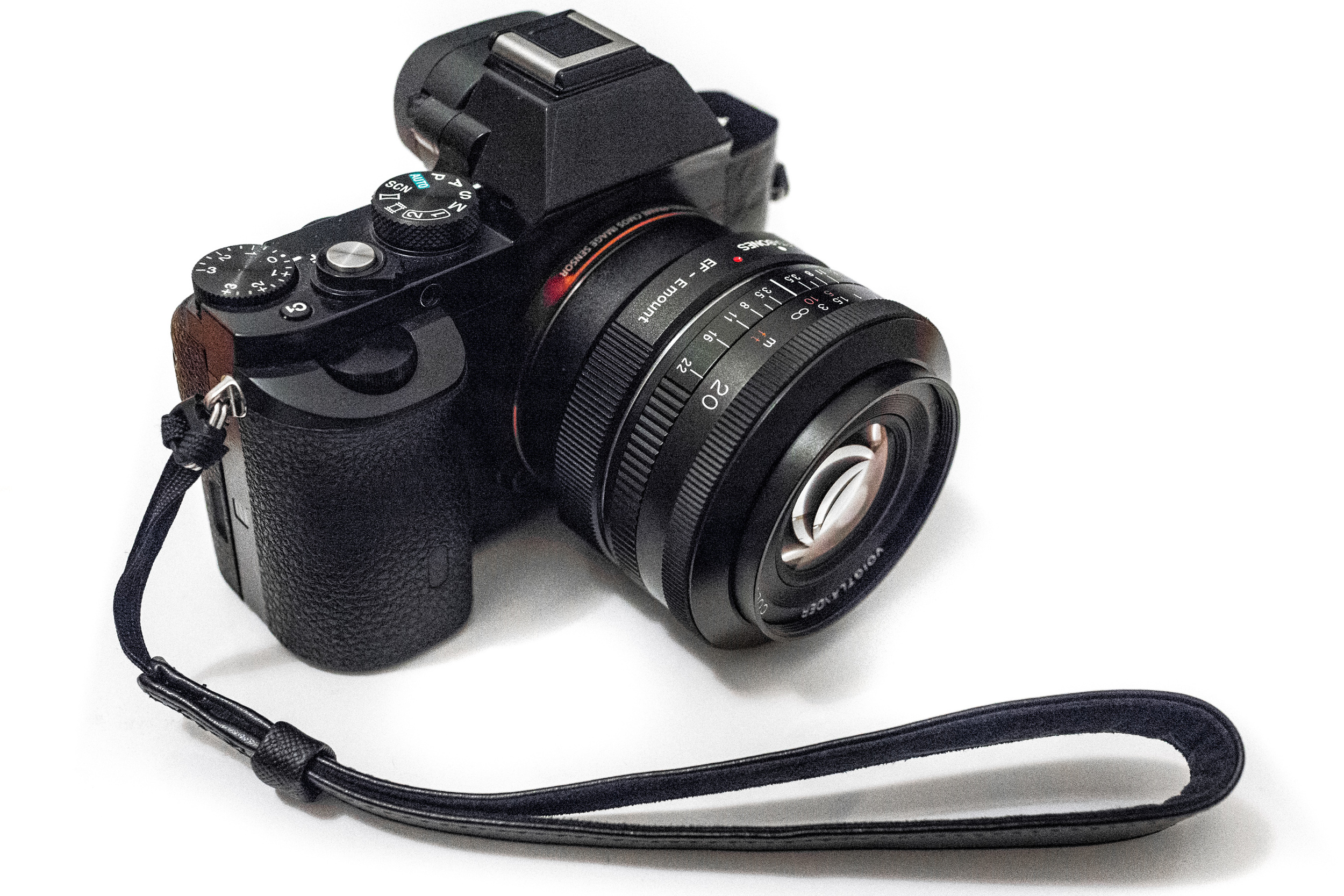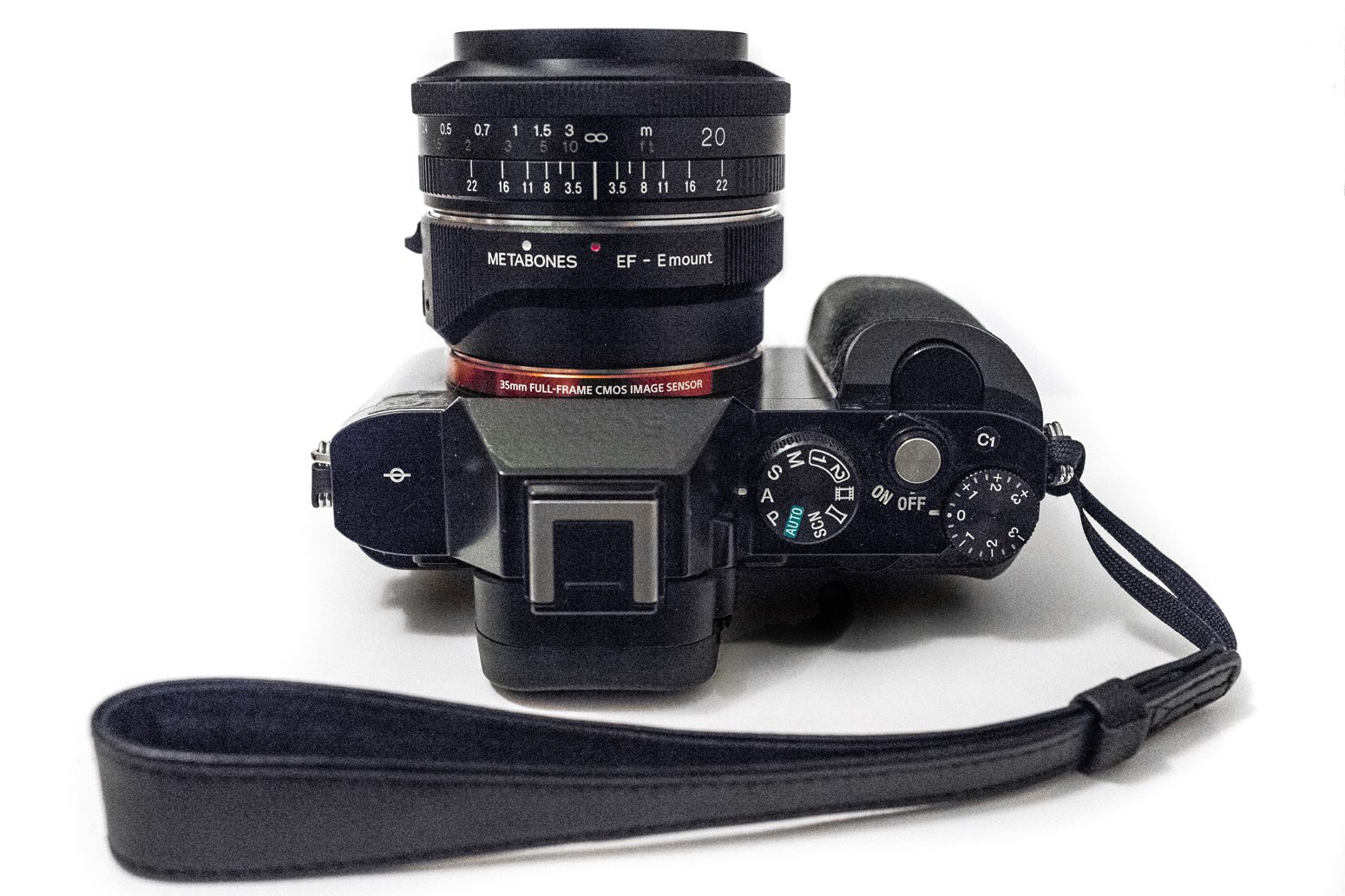...or
Life with the Voigtländer Color Skopar SLII 20mm f/3.5
We visited Kensington in London, and I took the A7R and lenses at three focal lengths (20, 24, 60mm), to contrast with our last trip there with the RX1 (fixed 35mm). We were hoping for a sunny day, but we were treated to one of the best, brightest winter days in the UK to which I've been witness. There was lots of strong sunlight, and clear blue skies. Most clouds were high altitude cirrus or cirrostratus, and for a split second, it was almost like being in Tokyo during the winter.
One camera, one lens, is an approach I enjoy and usually live by, but I knew that I wouldn't really know what to expect (narrow streets, open spaces), and though I feel as though I can usually make one lens (typically 35mm) work, I decided to make the most of the A7R. This meant that the day definitely had more of an air of photography about it than anything else, but that was the primary purpose, so it was fine. There were more lens changes than I would have liked; mostly between the wides. I knew I was hoping for a sunny day, as my fastest lens was "only" f/2.8.
The world through a 20mm lens is wide, very wide. I think most photographers would agree that 20mm is superwide, if not ultrawide. For this task, I picked out my Voigtlander Color Skopar SLII 20mm f/3.5 lens, which I have in Canon's EF mount. The absolute worst thing about this lens, which I think is its being a Canon mount issue, is that the aperture will not stop down until the shutter is depressed. This basically completely negates a major benefit of mirrorless cameras—real time live view (i.e. what you see on the LCD is the same as the final image). Had I the lens in Nikon mount, I wouldn't suffer this issue (I think). Unless I am being a major plonker, there is no way around this. However, as the lens is wide-open during the entire time of composition (there better not be any focus-shift with stopping down!), I am always impressed by the lens' output when looking at the final image on my computer. There's bags of detail. It's a very sharp optic.
There's some annoying moustache distortion, which is basically impossible to correct after-the-fact, so you'd better pay attention during composition. This is generally good practice anyway, but those of you wanting to shoot buildings all-day, might be wary of this issue.
The lens itself is tiny, for an SLR lens, which is good. It's light too, at around 280g. However, it needs to be mounted onto an adaptor for use with the A7R, and I have the chunky metabones mark 3, which takes the total weight up to ~420g. The combo is one of my heaviest, and due to the moustache distortion and lack of live-view, isn't one of my most popular, which is a shame, as it's optically very nice. It has the added bonus of EXIF being recorded on-camera.
The lens feels good in the hand, and when mounted on the A7R is actually enjoyable to use. As I mentioned earlier, 20mm is very wide. It's wide to the point of making sure that one's feet, or companions, are not in the frame. And good luck hiding your shadow!
It's a very handy focal length. A common misconception is that wide-angle lenses "allow you to get more in". This may be true to some extent, due to the wider field of view—indeed, I had to change from 24mm to 20mm to take the photo below:
What wide-angle lenses really allow you to do is to play with composition on a whole new level to telephoto lenses. Generally, it's better to get close in, where the action is, and frame everything using a unique perspective.
The eagle-eyed amongst you will have noticed that almost all of the photos were taken at f/8, with a couple at f/5.6. Such apertures improve depth of field (i.e. make most things in focus), and generally improve image sharpness for any given lens. Without a true-live view, it's hard to know exactly what is in focus, but there are manual markings on the lens.
I was very pleased with the output, when looking at the images on my 24" display. I was also pleased to not notice any "shutter-shock" artefacts (I have actually yet to notice them in any of my photos).
I'd recommend this lens, but only for those wanting/not minding manual focus, and the moustache distortion at the top of the frame. Ultimately, this lens far surpasses my photographic skills, and I have a lot more to gain from its use.




